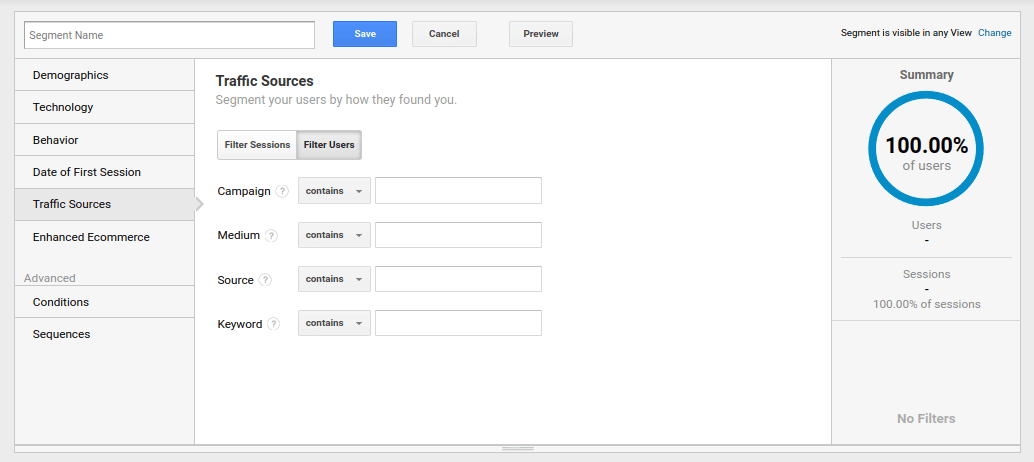Taking Advantage Of Remarketing in Google Analytics: A Comprehensive Overview
Using remarketing in Google Analytics provides services a strategic edge in connecting to prospective clients. The capability to target people that have currently engaged with your website offers an one-of-a-kind possibility for customized marketing efforts. By understanding exactly how to craft audience lists and deploy them properly, organizations can substantially boost their conversion prices. Nonetheless, the details of establishing and enhancing remarketing campaigns require a thorough understanding of target market division and efficiency evaluation. This overview will certainly clarify the important actions involved in taking advantage of the complete potential of remarketing in Google Analytics, causing boosted marketing results.
Understanding Remarketing in Google Analytics
Remarketing in Google Analytics permits businesses to tactically target individuals who have formerly communicated with their site or mobile application. By leveraging information from Google Analytics, organizations can produce customized remarketing checklists based on user actions, such as pages visited, activities taken, or particular objectives accomplished. This powerful device allows businesses to re-engage with customers who have revealed interest in their product and services, eventually increasing the chance of conversion.
Comprehending the different sorts of remarketing techniques is essential for an effective campaign - What Is “Remarketing” In Google Analytics?. Google Analytics supplies different options, consisting of conventional remarketing, dynamic remarketing, and remarketing lists for search advertisements (RLSA) Each kind serves an unique function and can be tailored to meet certain marketing goals
Additionally, assessing the efficiency of remarketing campaigns is vital for maximizing outcomes. Google Analytics provides valuable insights into the efficiency of various remarketing approaches, allowing businesses to make data-driven decisions and fine-tune their targeting technique. By continually keeping track of and adjusting remarketing efforts based on analytics data, businesses can optimize ROI and drive success in their advertising efforts.
Establishing Up Remarketing Campaigns

After setting up target market listings, the next step is to connect Google Analytics with Google Advertisements. By linking these 2 systems, services can effortlessly transfer audience lists from Google Analytics to Google Advertisements for remarketing functions. This combination permits even more exact targeting and much better campaign efficiency.
When the accounts are linked, businesses can develop remarketing campaigns in Google Ads making use of the target market provides previously specified in Google Analytics. These projects can be personalized with details ad creatives, messaging, and bidding methods to properly re-engage with previous visitors and drive conversions. By following these actions, businesses can utilize the power of remarketing to boost their advertising and marketing initiatives and boost ROI.
Utilizing Target Market Segmentation Strategies

Predefined sections in Google Analytics enable you to promptly analyze common audience groups fresh customers, returning individuals, or individuals who completed a certain goal on your website. Personalized sectors, on the various other hand, enable you to create unique segments based on particular requirements that are essential to your company purposes. Dynamic remarketing lists automatically change based on individual actions, revealing tailored advertisements to individuals that have actually connected with your website in particular ways.
Studying Remarketing Efficiency Metrics
Upon evaluating the performance of remarketing projects in Google Analytics, the evaluation of crucial efficiency metrics supplies useful understandings right into audience interaction and conversion rates. By delving right into metrics such as click-through prices (CTR), conversion prices, expense per procurement (CERTIFIED PUBLIC ACCOUNTANT), and return on advertisement helpful resources spend (ROAS), online marketers can determine the success of their remarketing initiatives. CTR shows the portion of individuals who clicked the ad after viewing it, showing the advertisement's significance and charm. Conversion rates measure the percent of individuals who completed a preferred action, such as purchasing, after clicking on the ad. Certified public accountant exposes the ordinary price sustained for every conversion, assisting assess campaign success. ROAS, on the other hand, evaluates the earnings produced for each buck you can look here spent on advertising. Analyzing these metrics enables marketers to maximize projects, refine target market targeting, and assign budget plans effectively to boost general remarketing efficiency.
Optimizing Remarketing Methods
When refining remarketing strategies in Google Analytics, focusing on audience division is paramount for accomplishing project success. By splitting your audience right into particular sections based on their habits, demographics, or passions, you can tailor your ads better to every team. This targeted technique raises the possibility of engaging individuals who have currently shown interest in your products or services, bring about greater conversion prices.
Another essential element of optimizing remarketing techniques is constantly testing and refining your campaigns (What Is “Remarketing” In Google Analytics?). A/B testing various ad creatives, messaging, or offers can assist you determine what resonates finest with your audience and drives the most conversions. By evaluating the performance of these tests in Google Analytics, you can make data-driven choices to maximize your remarketing initiatives additionally
Moreover, leveraging dynamic remarketing can significantly boost your project results. This attribute enables you to show customized ads to users based upon their previous communications with your internet site, showcasing solutions or products they have formerly watched. By blog here supplying customized web content to individuals based on their passions and habits, vibrant remarketing can assist increase engagement and drive conversions.
Verdict
To conclude, taking advantage of remarketing in Google Analytics is a tactical approach to target customers who have actually previously engaged with a site. By creating tailored target market lists and making use of audience division techniques, services can enhance remarketing projects for increased conversion prices. Analyzing efficiency metrics and continuously enhancing strategies are crucial for taking full advantage of the efficiency of remarketing efforts.
Google Analytics offers different choices, consisting of basic remarketing, dynamic remarketing, and remarketing listings for search ads (RLSA)After establishing up audience listings, the following step is to link Google Analytics with Google Advertisements. By linking these two systems, businesses can flawlessly move target market lists from Google Analytics to Google Ads for remarketing objectives.Once the accounts are connected, companies can develop remarketing campaigns in Google Ads utilizing the audience notes previously defined in Google Analytics.When refining remarketing approaches in Google Analytics, focusing on target market segmentation is extremely important for attaining campaign success.
 Jake Lloyd Then & Now!
Jake Lloyd Then & Now! Anna Chlumsky Then & Now!
Anna Chlumsky Then & Now! Matilda Ledger Then & Now!
Matilda Ledger Then & Now! Richard Thomas Then & Now!
Richard Thomas Then & Now! Andrew McCarthy Then & Now!
Andrew McCarthy Then & Now!